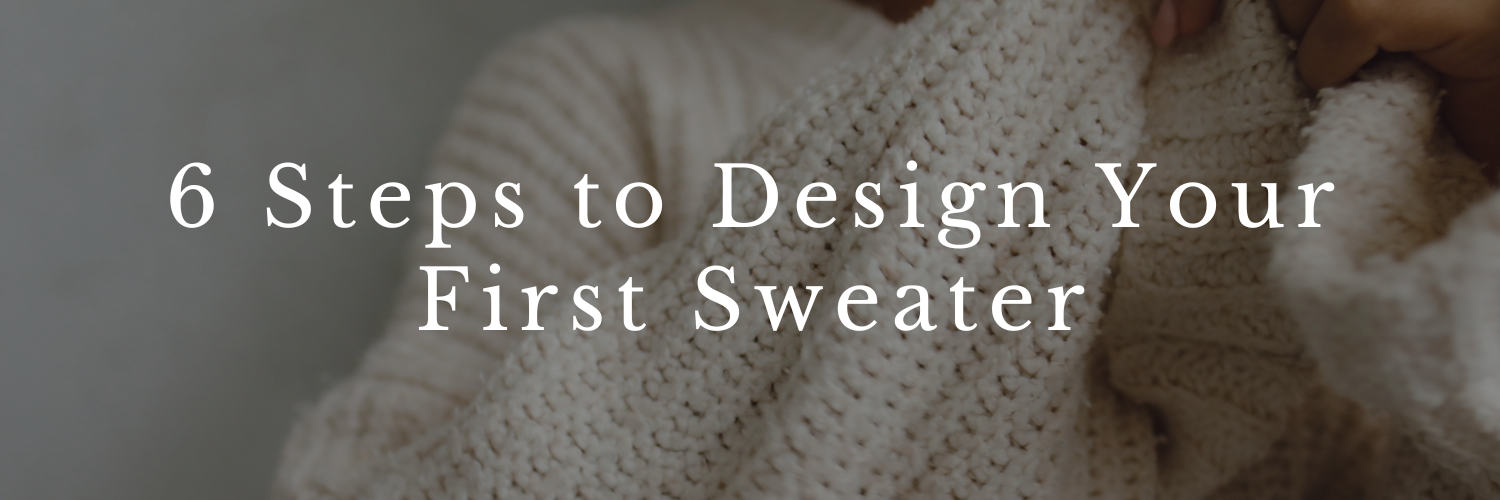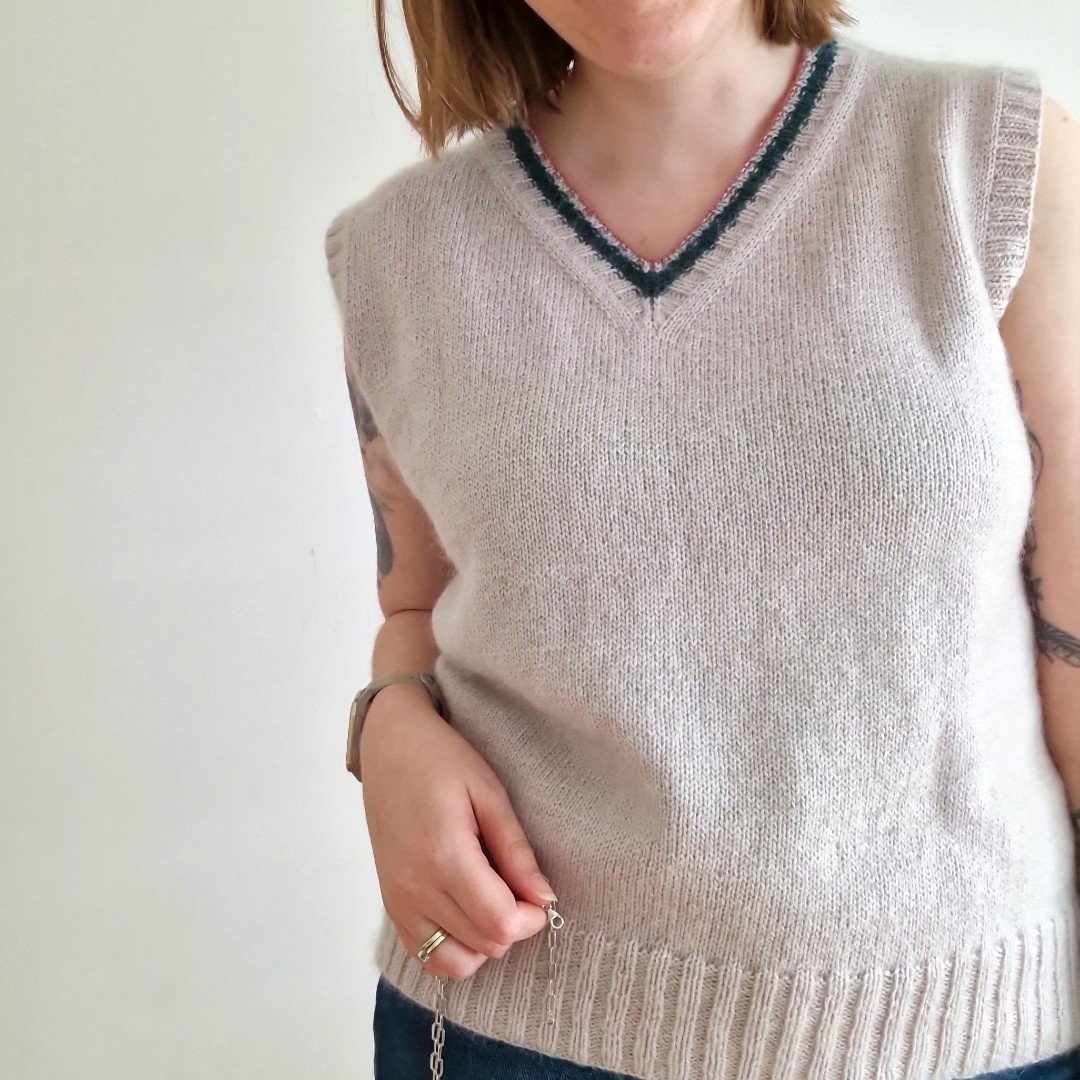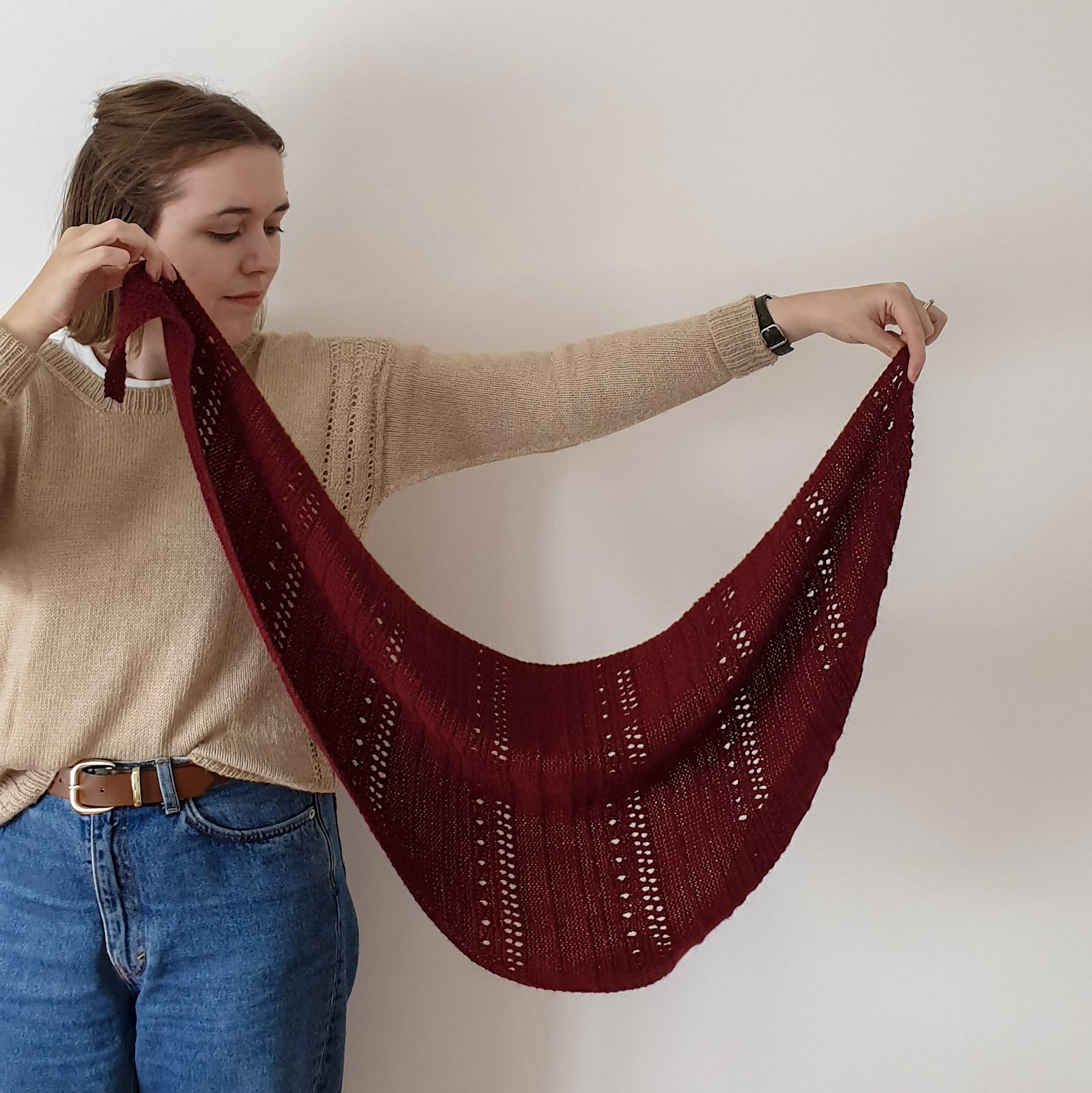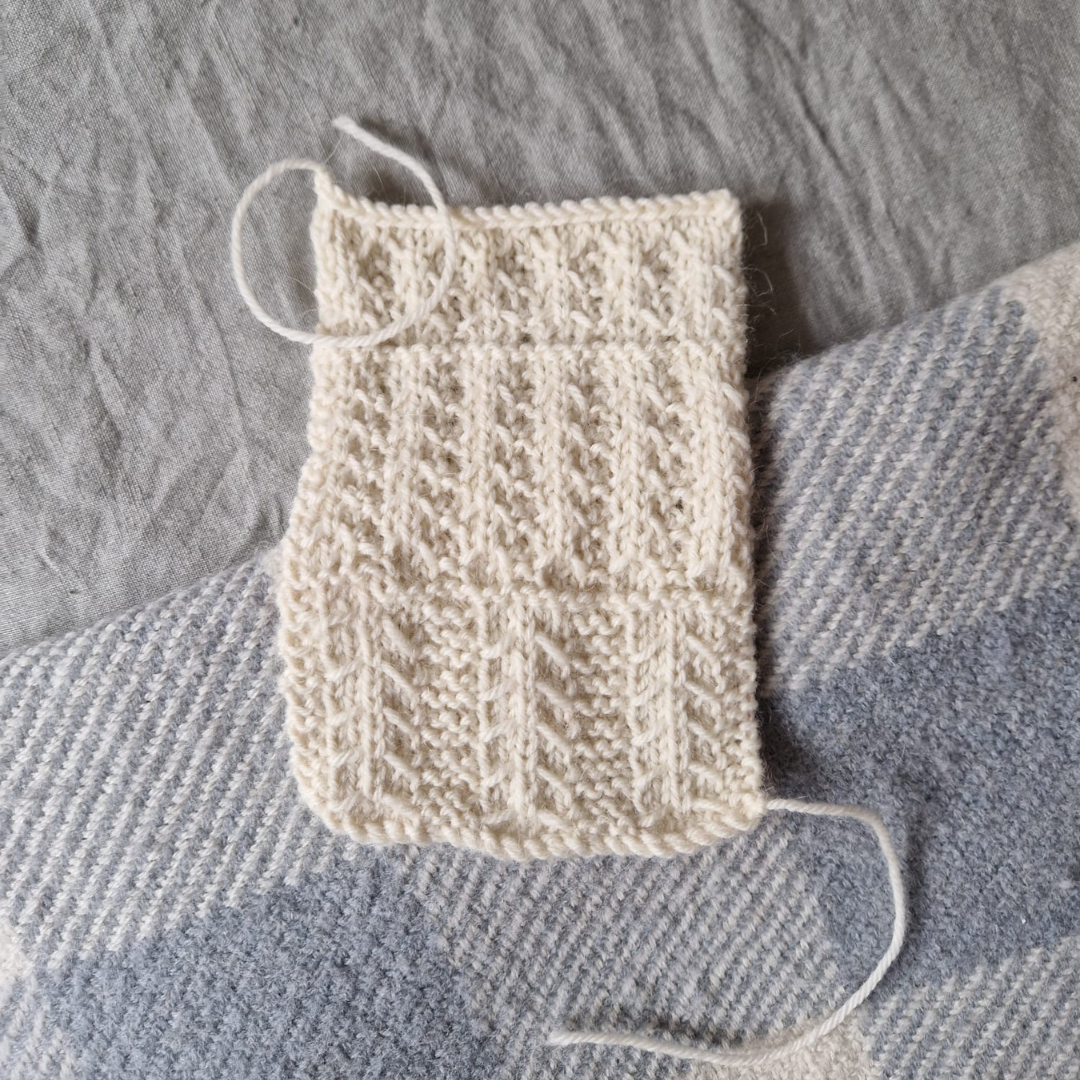How to Design Your First Sweater Pattern
How often do you dream about designing a sweater pattern but push the idea aside because it seems impossible?
You’re a great knitter and have even designed a few accessory patterns, but designing a sweater feels way out of your league. Don’t you have to have studied fashion for that?
The good news is that sweater design isn’t as complex and overwhelming as it may seem. In fact, designing a sweater is one of the most exciting, inspiring and fulfilling things a knitting pattern designer can do!
In this blog post, I will share how YOU can get started on your first sweater design today.
Image description: Graphic saying “6 Steps to Design Your First Sweater” on top of a photo of a crocheted sleeve.
Do the Upfront Prep Work Before You Dive In
I know, I know. You want to skip to the good bit and start knitting up your sweater design, but patience, young grasshopper! All that planning, sketching and swatching can feel like it’s slowing you down, but in fact, it’s doing the opposite.
The early stages of the sweater design process can make or break your pattern. You must spend enough time experimenting with design ideas, selecting the best yarn for the job, troubleshooting any areas of the design or construction that you’re not entirely confident in and perfecting those design details.
All of this upfront decision-making and vision-casting will essentially create a roadmap that you can follow throughout the rest of the design process. Skip this stage, and you’ll make impulsive decisions about your design that may not work out how you hoped.
Image description: Woman with ginger curly hair, wearing a fuzzy brioche sweater, and gazing into the distance whilst leaning on her hand.
Select the Right Style and Construction
Designing your first sweater is much easier when you’re working with a style and construction that suits your skills and experience. Ideally, this construction should be one you have already knitted before from someone else’s pattern.
My first sweater was a drop-shoulder sweater knitted seamlessly from the bottom up. I chose this construction because I’d previously knitted a cardigan in a similar construction and felt very confident with it. Doing this allowed me to focus on the design details and calculate my pattern numbers, which is more than enough to think about when you’re a new sweater designer!
Knowing your sweater’s style and construction well will give you an excellent skeleton for your pattern instructions, helping you understand what numbers to calculate and when.
If you aren’t very confident with sweater knitting yet, don’t worry! I suggest you knit a sweater or two from someone else’s pattern first and then return to sweater design later.
Keep it Simple
Designing your first sweater already takes a lot of time and hard work. Don’t make it even more difficult for yourself by attempting to create something super complex! Doing this will only feel demoralising. There is plenty of time to go wild with your designs in the future, so keep things simple whilst you are starting out.
Working on a simple design is a brilliant way to familiarise yourself with the entire sweater design process, from start to finish, as well as build your confidence and belief in yourself as a designer.
Image description: Close up of someone’s hand holding onto their arm whilst wearing a rust-coloured sweater. Beneath it, the graphic says “Knitting pattern design. How to Design Your First Sweater. www.sistermountain.com”
Don’t Avoid Spreadsheets
When designing your first sweater pattern, it can be very tempting to avoid using a spreadsheet in order to “keep it simple”. This is what I did as a new sweater designer and let me tell you that it actually made the process much harder.
I had to work out all my pattern numbers using a pen, paper and a calculator and calculate each size individually. If I made a mistake and didn’t spot it until later, I’d have to scrap all my work after that point because it threw off my numbers. The whole thing was very slow and frustrating!
Spreadsheets, however, make grading a breeze. Yes, there is a bit of a learning curve if you’re unfamiliar with spreadsheets, but it’s easy to pick up, and you’ll be glad you did!
With the correct spreadsheet formulas, you can work out your pattern numbers for all sizes within a few seconds. Any mistakes can be spotted and fixed quickly, even if you made them at the beginning of the spreadsheet since all cells refer to one another and automatically correct themselves.
You can learn more about how I grade knitting patterns using a spreadsheet in this blog series.
Stay committed
The first time you do anything will inevitably be a challenge, especially when you’re doing something as big as designing your first sweater, but don’t let that challenge push you to give up. Remind yourself that you are designing your first sweater pattern and that it’s normal to run into problems or make mistakes along the way. It’s all part of the process!
It is common to feel frustrated (even infuriated!) the first time you attempt to design a sweater pattern. You may also feel happy, sad, confused, inspired, angry, and insecure. All of these emotions are perfectly normal, and most designers have experienced them along the way.
The important thing is that you stay committed and keep going. You will only learn by pushing forward and through. Every pattern, every mistake you make, and every problem are opportunities to grow as a designer.
Follow a Framework
Why waste your time trying to figure out what to do the first time you design a sweater when you can be guided by a tried and tested framework?
For those of you who would like more guidance, support and accountability, I teach a course called Sweater Design School that walks you through the pullover design process from start to finish. It’s closed for enrollment right now, but it will be opening soon! You can sign up to watch my free, on-demand video workshop about pullover design to receive an email when it’s open for enrolment again.






















